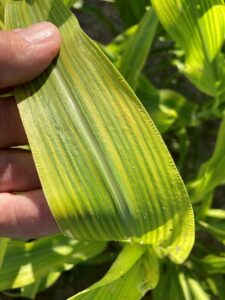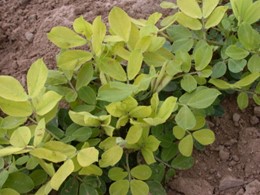The Mighty Micronutrients Series: Vol. 4 - Iron and Copper
Posted Bethany Widman, Research Agronomist on May 21, 2025

These next two micronutrients tend to be forgotten, but in this week’s edition of the Mighty Micronutrients series, we are bringing them to center stage. These micronutrients are iron and copper, which, just like the other micronutrients, are needed in small amounts but have a mighty impact on plant health.
Why are Iron and Copper Needed?
Chlorophyll Production
Chlorophyll is the pigment that gives plants their green color and is essential for the photosynthesis process. Iron is needed by plants to produce chlorophyll. If iron is limited in the plant, chlorophyll production is slowed. This can lead to less energy produced in the plant via photosynthesis, reducing overall plant health and vigor.
Once chlorophyll is produced, plants need copper to help reduce the breakdown of chlorophyll. If chlorophyll begins to break down, this will lead to lower photosynthesis efficiency in the plant, meaning less light is absorbed, leaving the plant with less usable energy than it needs.
Respiration
Respiration is the process by which plants convert sugars produced from photosynthesis into energy. This energy powers a plant's stress responses, cell development, and the transport of water and nutrients, as well as being a key component needed for healthy growth during the season.
Iron is critical to the entire respiration process because it is a key factor in proteins involved in the electron transport chain, the stage of respiration where most ATP is generated. Without sufficient iron, plants cannot convert the energy needed for growth, nutrient uptake, or stress tolerance.
Plants also require copper to maintain the precise flow of electrons to produce ATP and transfer energy within the cells. There are two types of respiration: aerobic and anaerobic.
Aerobic respiration, the primary form, requires oxygen and produces ATP, the main energy molecule used by plants for growth and metabolic functions. However, aerobic respiration can slow or stop in waterlogged or oxygen-poor soils.
Anaerobic respiration, which does not require oxygen, provides a short-term energy boost that helps seeds begin germinating in cool, wet conditions, but it cannot sustain long-term growth.
Spot the Deficiency
While the goal is to provide crops with iron and/or copper before deficiency occurs, here are some things to look out for if crops are deficient:
Iron: Deficiencies in iron are most commonly found in soils with a pH of 7.5 or higher, sandy soils, and fields that have poor aeration. Iron is immobile in plants, so deficiency signs will first appear in the younger leaves as a pale green leaf color with yellowing of the leaf veins.


Copper: Areas that you will most likely find crops deficient in copper will be include sandy soil, high in organic matter (can tie up copper), and soils with a high pH. Plants deficient in copper will show as wilted or curled younger leaves, failure to flower, and soft limp stalks.
How Chelation Plays a Role
When looking for a fertilizer that contains iron or copper, oftentimes they are in an EDTA or citric chelated solution, but what does this mean? Understanding the differences is key in optimizing your fertilizer application of iron and/or copper. But first, let's dive into what chelation is:
Chelation is the chemical process where metal ions bind to molecules such as a chelating agent to form a stable ring-like complex called a chelate. The word chelation comes from the Greek word “chele,” which means “claw,” referring to the way that the chelating agent binds to the metal ion like a claw, as seen below. 
EDTA
EDTA stands for ethylenediaminetetraacetic acid, a synthetic compound that can chelate metal ions. This chelating agent is beneficial for chelating iron and copper, which in turn can improve overall plant health. EDTA solutions can be applied to soil or foliage and are compatible with most fungicides, insecticides, and herbicides.
The Andersons Iron 4.5% and Copper 7.5% are both EDTA formulations that can be added to a fertilizer tank mix (after performing a jar test) or mixed with water and applied as a stand-alone product. Both products can be applied to soil or foliage for all crops.
Citric
Citric chelates are organic compounds derived from citric acid, which is present in most fruits and vegetables. They can chelate metal ions like iron and copper. This chelating agent is widely used in agriculture to enhance crops' nutrient uptake.
The Andersons’ citric-chelated Iron 5% and Copper 5% products are excellent for providing these nutrients to crops during the foliar season. We recommend using these products as an additive in dry or liquid fertilizers, but suggest conducting a jar test beforehand, as they may not be compatible with certain fertilizers.
Continue the Conversation with Us
Ensuring crops receive the proper nutrition throughout the growing season is a great way to prevent deficiencies and promote higher yields at harvest. Our citric and EDTA iron and copper products are great additions to most fertilizer tank mixes to provide your crops with the nutrients they need to thrive.
To learn more about these solutions and how they can fit into this season’s nutritional needs, visit us online at https://andersonsplantnutrient.com/agriculture. If you have any questions, our sales and agronomy teams are here to help. Reach out today to discuss the best approach to fit your needs.



